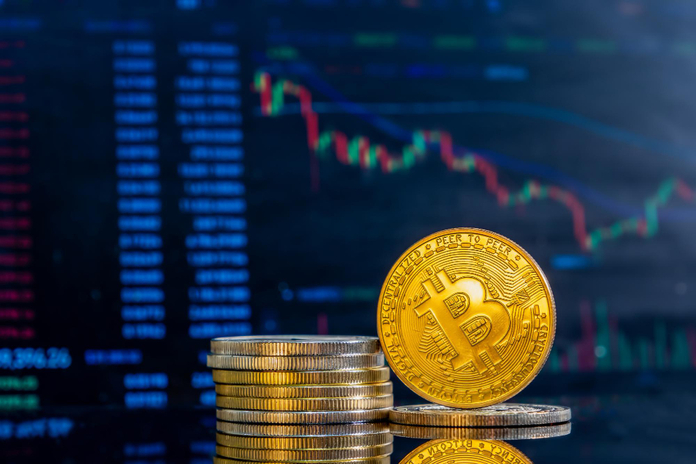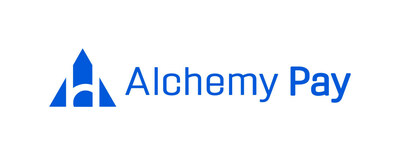Bybit Champions Web3 Innovation and Strengthens Ties with Asia’s Crypto Community at Taipei Blockchain Week
This post was originally published on this site
DUBAI, UAE, Dec. 24, 2024 /PRNewswire/ — Bybit, the world’s second-largest cryptocurrency exchange, debuted at the Taipei Blockchain Week Dec. 12 to 14, 2024, spotlighting the vibrant Web3 innovations on its platform alongside a dynamic roster of its strategic Layer 1 ecosystem partners.
Featuring side events in collaboration with the Solana Foundation, the Sui Foundation, and a dazzling lineup of multichain projects, Bybit Web3 dedicated the Taipei tour to building up communities and deepening connections with Web3 ecosystem partners. The Bybit delegation also took the stage to uncover the latest insights on Web3, building with a purpose, and the future of blockchain utilities and DeFi.
Purpose, Innovation, and Partnerships
Representing Bybit at the conference were MK Chin, Core Contributor for Blockchain for Good Alliance and Head of Marketing of Bybit Web3, and Angela Huang, Bybit VIP Relationship Manager, at various panels.
Expanding on blockchain technology’s potential in building better realities for all, Chin joined as a panellist in the session Marketing Web3: Strategies to Engage and Onboard the Next Billion Users. Chin shared learnings and actionable insights from the Bybit-supported Blockchain for Good initiative (BGA), elaborating on both real-world utilities of blockchain technologies and the trickling down of benefits to grassroot communities.
Meanwhile, Angela Huang moderated three sessions closely tied to Bybit’s mission, steering conversations on crucial industry topics:
- The panel Bridging TradFi and DeFi: The Exchange’s Role in User Onboarding on Dec. 12 examined how exchanges could elevate access to the digital economy for users at scale.
- On Dec. 13, Networked Intelligence: The Rise of Decentralized AI explored the intersection of blockchain and AI, showcasing their potential to transform and democratize finance.
- The Building for Impact: How Female Founders Drive Purpose-Driven Innovation panel on Dec. 14 highlighted the evolving role of women leaders in driving solution-oriented innovation.
Another highlight at the event was amplified globally via Bybit Livestream. Collaborating with the Sui Foundation, Ondo, DeepBook, Scallop, NAVI, and other leading projects, Bybit Web3 led a critical debate on the future of Sui’s growth strategy: Sui Ecosystem Showdown: Mass Adoption vs. Native Growth. Hosted by Emily Bao, Head of Web3 and Spot at Bybit, the livestream attracted over 6,500 viewers live at the Taipei Blockchain Week and globally on Dec. 13.
Deepening Bonds: Key Web3 Ecosystems and Communities
Bybit Web3 brought the local community closer to its world-class ecosystem partners with engaging community events, co-hosting Taiwan DeFi Flow with Sui and Scallop on Dec. 12, and Solana Ecosystem Taipei Greetings with the Solana Foundation and Solar with the support of Orderly Network, Zetachain, Jupiter, and Sonic, on Dec. 14. Through collaborations and innovation, Bybit Web3 opens up new on-chain possibilities for partners and stakeholders to expand the Web3 universe.
These relaxed evening gatherings provided a convivial backdrop for like-minded builders and entrepreneurs to network, exchange ideas, and celebrate their shared enthusiasm for DeFi and dApps in Asia’s growing Web3 innovation hub.
“It’s been an incredible experience connecting with the builders, believers, users, creators, and supporters driving innovation on Solana and Sui. These moments remind us of the heart and spirit of Web3—a vibrant ecosystem shaped by collaboration and shared vision. I’m deeply proud to witness this growth, grateful for every connection made, and excited for the road ahead,” said MK Chin, Core Contributor for Blockchain for Good Alliance and Head of Marketing of Bybit Web3.
“Taipei Blockchain Week showcased the immense growth and potential of Web3 innovation in Asia. Representing Bybit, I had the honor to collaborate with industry leaders to explore Web3’s limitless possibilities, from DeFi and AI to real-world applications. Together, we are shaping a more inclusive global crypto community,” said Angela Huang, Bybit VIP Relationship Manager.
In the past year, Bybit has seen exponential growth in its user base, surging to over 60 million by the end of 2024. It has also invested in vertical growth through community engagements across the world. Connected by the passion for the future of crypto, blockchain, and Web3, the Bybit family is on track to building an inclusive and sustainable path to growth for the industry.


#Bybit / #TheCryptoArk / #BybitWeb3
About Bybit Web3
Bybit Web3 is redefining openness in the decentralized world, creating a simpler, open, and equal ecosystem for everyone. We are committed to welcoming builders, creators, and partners in the blockchain space, extending an invitation to both crypto enthusiasts and the curious, with a community of over 130 million wallet addresses across over 30 major ecosystem partners, and counting.
Bybit Web3 provides a comprehensive suite of Web3 products designed to make accessing, swapping, collecting and growing Web3 assets as open and simple as possible. Our wallets, marketplaces and platforms are all backed by the security and expertise that define Bybit as the world’s second-largest cryptocurrency exchange by trading volume, trusted by over 50 million users globally.
Join the revolution now and open the door to your Web3 future with Bybit.
For more details about Bybit Web3, please visit Bybit Web3.
About Bybit
Bybit is the world’s second-largest cryptocurrency exchange by trading volume, serving a global community of over 60 million users. Founded in 2018, Bybit is redefining openness in the decentralized world by creating a simpler, open and equal ecosystem for everyone. With a strong focus on Web3, Bybit partners strategically with leading blockchain protocols to provide robust infrastructure and drive on-chain innovation. Renowned for its secure custody, diverse marketplaces, intuitive user experience, and advanced blockchain tools, Bybit bridges the gap between TradFi and DeFi, empowering builders, creators, and enthusiasts to unlock the full potential of Web3. Discover the future of decentralized finance at Bybit.com.
For more details about Bybit, please visit Bybit Press
For media inquiries, please contact: media@bybit.com
For updates, please follow: Bybit’s Communities and Social Media
Discord | Facebook | Instagram | LinkedIn | Reddit | Telegram | TikTok | X | Youtube

Photo – https://megastockalert.com/wp-content/uploads/2024/12/1-1.jpg
Photo – https://megastockalert.com/wp-content/uploads/2024/12/2.jpg
Logo – https://megastockalert.com/wp-content/uploads/2024/03/Logo.jpg
![]() View original content:https://www.prnewswire.co.uk/news-releases/bybit-champions-web3-innovation-and-strengthens-ties-with-asias-crypto-community-at-taipei-blockchain-week-302338874.html
View original content:https://www.prnewswire.co.uk/news-releases/bybit-champions-web3-innovation-and-strengthens-ties-with-asias-crypto-community-at-taipei-blockchain-week-302338874.html

Featured Image: Unplash @ Kanchanara

















